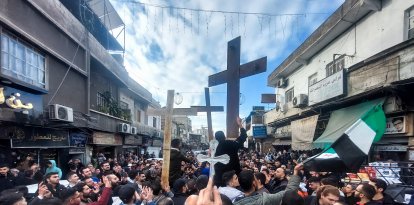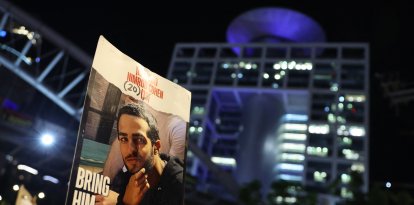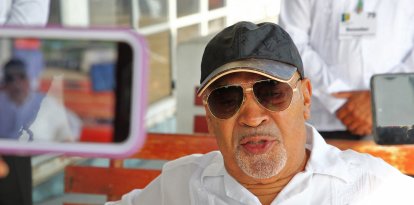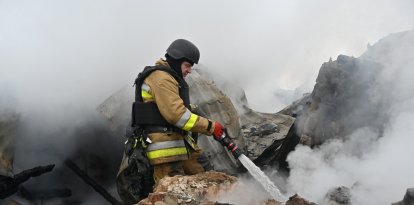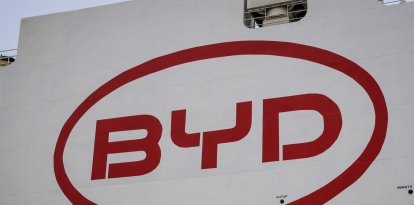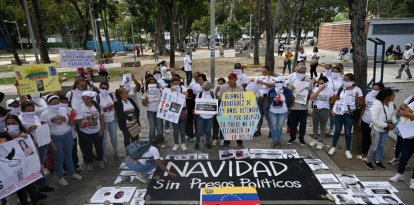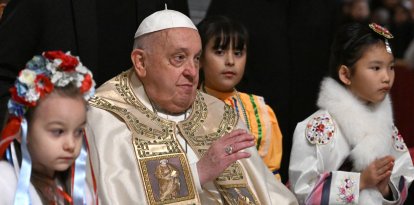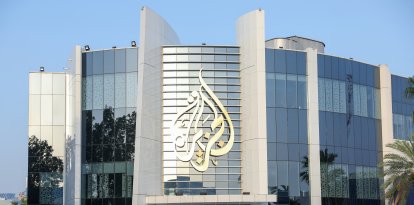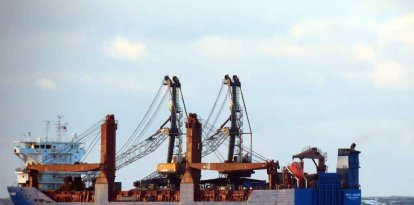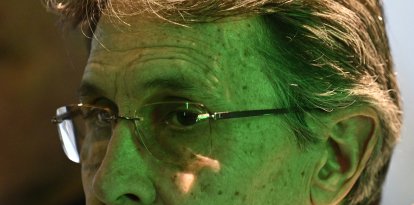Exclusive details | Tragedy in Venezuela: Collapse of illegal gold mine leaves more than 20 dead in the state of Bolívar
The Bulla Loca mine collapsed Tuesday due to illicit and uncontrolled extraction operation operating with complicity from Venezuelan authorities.
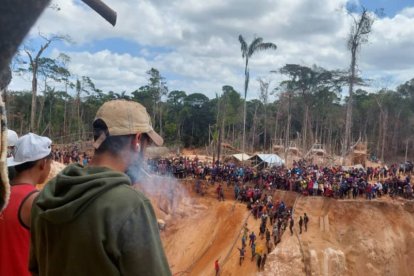
Fotografías enviadas desde la mina ""Bulla Loca"". Cortesía: Fritz Sánchez
On Tuesday, Feb. 20, an illegal mine in Angostura, Bolívar, Venezuela, collapsed in the early afternoon, leaving more than 20 dead so far, a number that is increasing as bodies are recovered.
The mine, known as Bulla Loca, collapsed due to the illicit and uncontrolled extraction operation that had been carried out in the area since the end of December, as Venezuelan ecological and environmental journalist Fritz Sánchez explained to Voz Media.
According to sources in the area, who spoke with Voz Media on condition of anonymity, the deposit operated under complicit oversight of the Venezuelan military, which collected bribes from criminal groups that took control of the mine in early 2024.
Likewise, NGO sources, who also requested anonymity, reported that both the Venezuelan Navy and Army collected bribes for each shipment of fuel that the criminal groups brought to “Bulla Loca” to keep the hydraulic monitors and machinery necessary for the illicit extraction of gold working constantly.
“The mine consumed around 100 drums—of 200 liters each—of fuel daily … which gives us an idea of the great magnitude of the gold activity in Bulla Loca. If the Army has among its functions the distribution, control and sale of fuel at the national level, how is it possible that 20,000 liters of fuel were diverted to this field on a continuous and constant basis?” questioned Sánchez, who cited data from whistleblowers in the area.
According to informants and Sánchez's report, Bulla Loca is controlled by the mega-gang headed by Alberto Reiniero, alias “El Ciego,” and Nelson, better known as “El Caracas.” The gang dominates the entire region from El Manteco to Alto Paragua.
These groups took control of the mines and pay a high percentage of the gold extracted to the different components of the Venezuelan Armed Forces to operate with total impunity in the area, a very common practice in what is known as the “Orinoco Mining Arc” in the state of Bolívar.
In 2016, the Nicolás Maduro regime arbitrarily approved a mineral exploitation project called Arco Minero del Orinoco to extract metallic and non-metallic minerals. This project gave the green light to the uncontrolled deforestation of important natural and forest reserves throughout the Guayana region (Amazonas, Bolívar and Delta Amacuro states). These illicit activities, supported by the inaction and complicity of law enforcement, generated the expansion of mining both inside and outside the Orinoco Mining Arc under the control of criminal gangs and Colombian guerrilla groups, such as FARC and ELN.
The consequences were dire for the populations in these regions. The indigenous people of the areas are exploited and used as slave labor in several mining areas. Unpunished massacres of civilians are also reported in the disputed mining territories. In addition, there is also a worrying presence of diseases, such as malaria and mercury contamination that is unprecedented throughout the region.
“Due to government complicity and the inaction of the state security forces, they have stimulated the increase in extractive activity to alarming levels. For this reason, hundreds of Venezuelans go to the mines as a last resort for survival, exposing themselves to tragedies such as the 'Bulla Loca' mine or other dangers inherent to the criminal administrations that exercise real power in these sectors," Sánchez explained.
Desperate relatives
At the time of publishing this article, relatives of the miners in “Bulla Loca” have questioned the absence of rescue groups and government rescuers at the site. Various residents said that, until now, there are still dozens of bodies covered up by the collapse and that they do not have the necessary resources to rescue them.
So far, as Voz Media learned, those who have been carrying out the rescue work since Tuesday afternoon are the miners themselves, who, according to reports, claim to be exhausted after more than 24 hours of manual excavations to try to find survivors and the bodies of their companions.
Meanwhile, the desperation of the relatives increases with the passing of time. The number of missing remains unknown, but it is estimated that there are still dozens of bodies buried in the sand.
The mine, which is difficult to access, is located two and a half hours by river transport from the nearest town, which is the city of La Paragua. Due to the decrease in the riverbed, navigation becomes more difficult and is even interrupted at Salto Uraima, where travelers must make a transfer and cross a small island on foot.
For now, sources in the area reported that the recovered bodies have only been able to be transferred to Salto Uraima. In turn, relatives of the miners claim that the authorities have not sent boats to transport the bodies or injured people (the number is also unknown) to La Paragua.
Opposition politician Americo De Grazia, former deputy for the state of Bolívar and whistleblower about the situation in the Orinoco Mining Arc, spoke with Voz Media and warned that the Maduro regime is operating with “opacity” in trying to avoid an international scandal over what happened in Bulla Loca.
“The authorities do not send lifeguards and rescuers because it would be harmful publicity for them, fearing damage to the regime’s image when videos and photographs of the dead begin to emerge. They will play at opacity and say that the tragedy is much less than what is being reported,” said De Grazia.
Meanwhile, Venezuelan authorities contradict themselves when reporting the figures.
In statements to CNN, the mayor of that town, Yorgi Arciniega, said that the tragedy left at least 30 dead and 100 people buried. However, Edgar Colina Reyes, secretary of citizen security of Bolívar, told the network that he could only confirm two deaths and two injuries.
This is a developing story.













